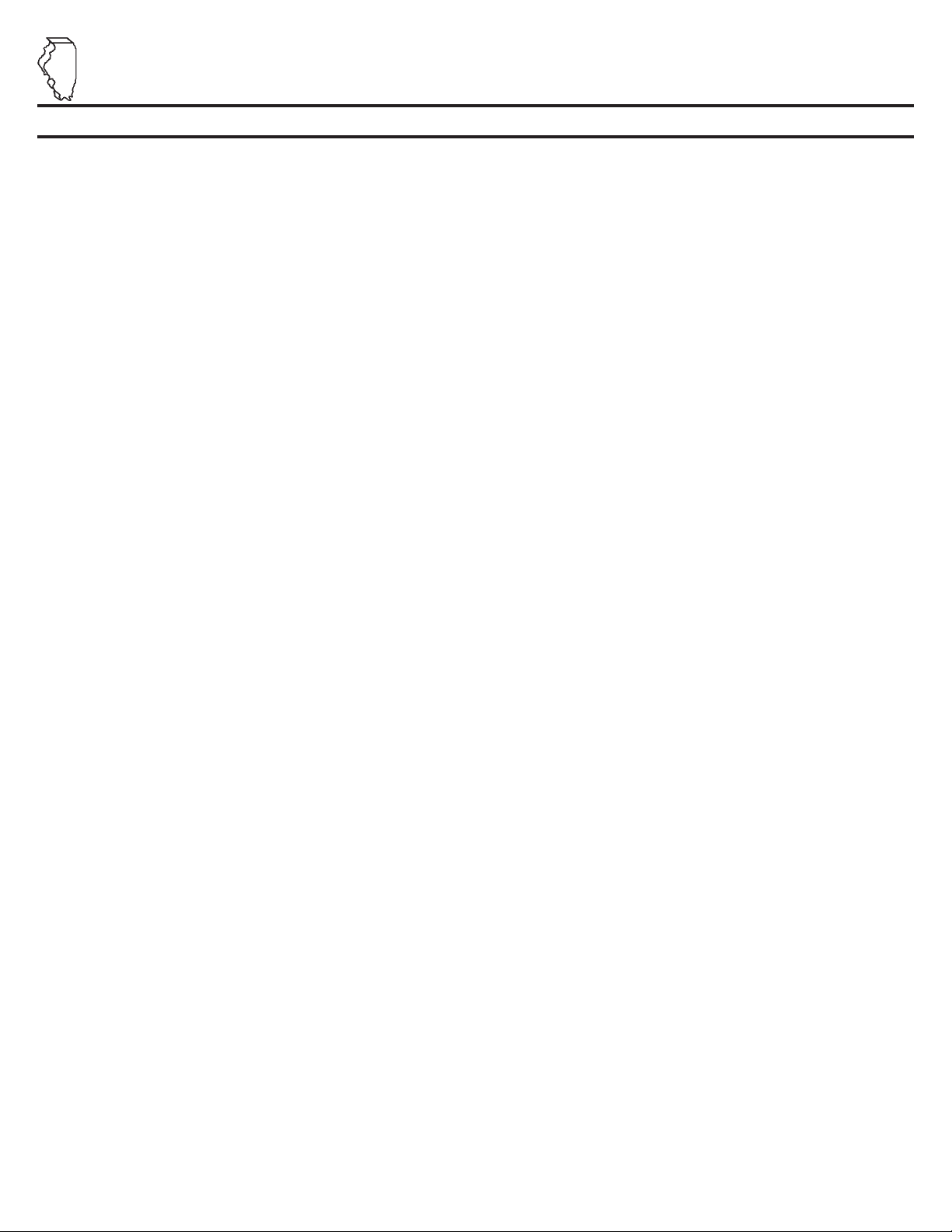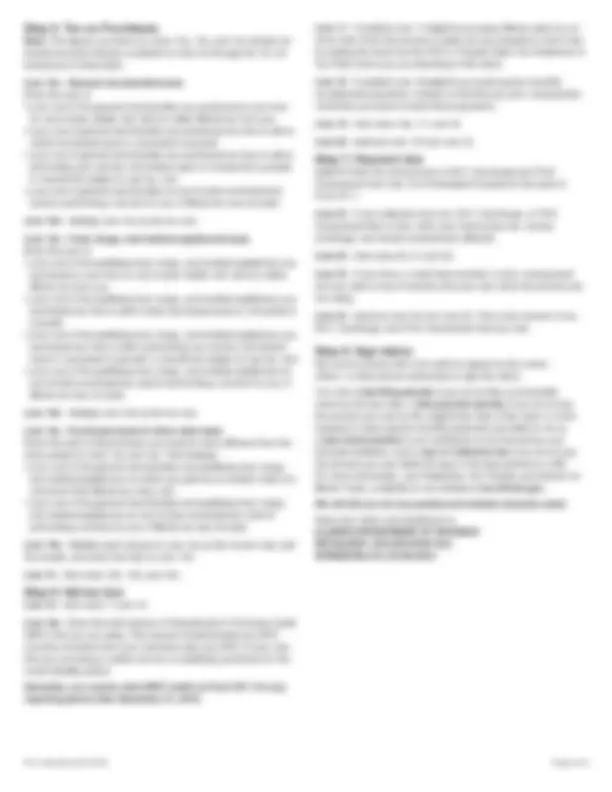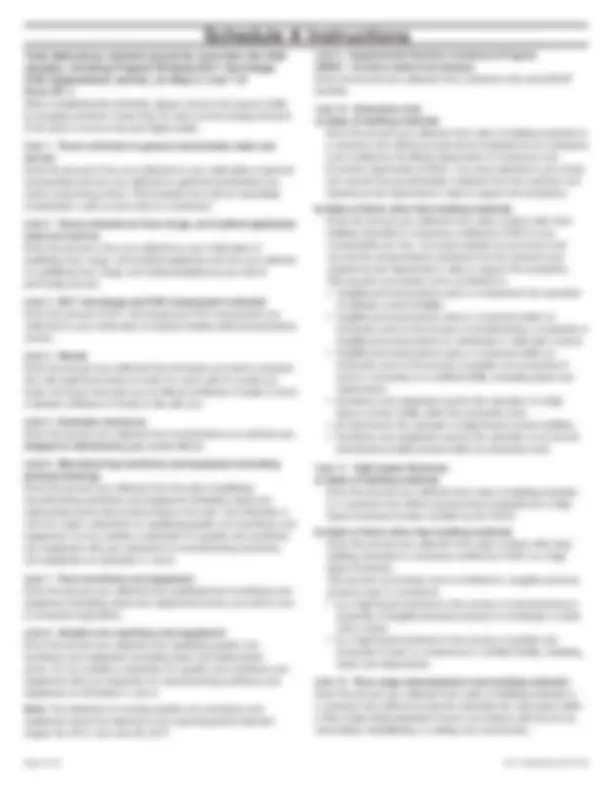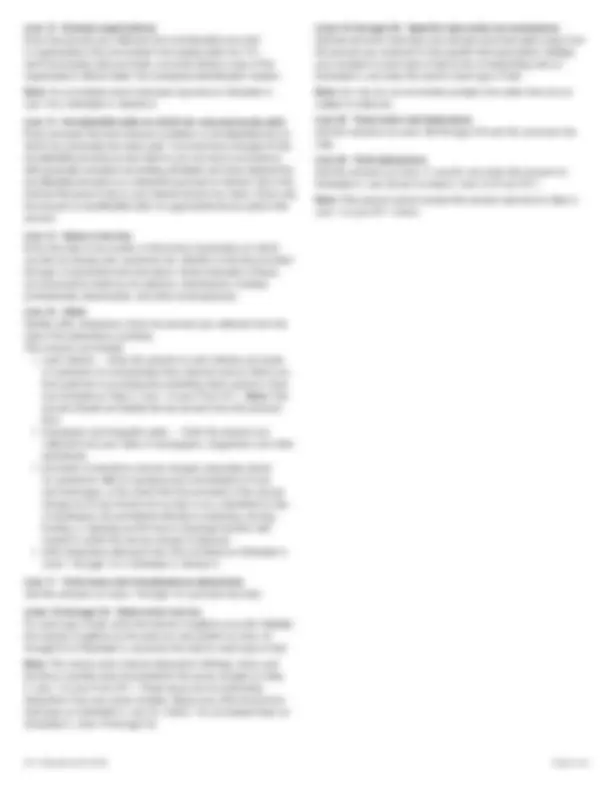





Study with the several resources on Docsity

Earn points by helping other students or get them with a premium plan


Prepare for your exams
Study with the several resources on Docsity

Earn points to download
Earn points by helping other students or get them with a premium plan
Community
Ask the community for help and clear up your study doubts
Discover the best universities in your country according to Docsity users
Free resources
Download our free guides on studying techniques, anxiety management strategies, and thesis advice from Docsity tutors
Who must file Form ST-1? You must file Form ST-1, Sales and Use Tax and E911 Surcharge. Return, if you are making retail sales of any of the following in.
Typology: Study Guides, Projects, Research
1 / 6

This page cannot be seen from the preview
Don't miss anything!




ST-1 Instructions (R-07/18)
You must file Form ST-1, Sales and Use Tax and E911 Surcharge Return, if you are making retail sales of any of the following in Illinois:
All sales of aviation fuel made on or after December 1, 2017, must be reported and the tax paid on Form ST-70, Aviation Fuel Sales and Use Tax Return. Receipts from sales of aviation fuel still will be reported on Form ST-1, Step 2, Line 1, but then must be deducted entirely from the ST-1 as an Other Deduction on Schedule A, Line 16, using the write-in description “Sales of Aviation Fuel.”
You must file this return, along with any payment you owe, on or before the 20th day of the month following the end of your reporting period. Note: If the due date falls on a weekend or holiday, your return and payment are due the next business day. The Department determines how often you must file a return based on your initial registration and annual liability. Filing requirements based on your average monthly liability are determined as follows:
Yes, you can use MyTax Illinois at mytax.illinois.gov to file your Form ST-1. MyTax Illinois also allows for electronic payment of any tax due. You can also file Form ST-1 using a direct file service through an outside vendor. Note : Some taxpayers are mandated to file Form ST- electronically. For more information, see our website at tax.illinois.gov.
If you have one business but sell items at more than one location (site), you must collect and remit sales and use taxes according to the rates of each particular location. You must complete and attach Form ST-2, Multiple Site Form, to your Form ST-1 to show the breakdown of taxes collected and paid from each site. MyTax Illinois allows users to calculate their tax due for each location on Form ST-2, Multiple Site Form, and combine their liability on a single Form ST-1.
If you file electronically using MyTax Illinois, the rates will be populated for you according to your registration. You can also use the Tax Rate Database on our website at tax.illinois.gov to look up location-specific tax rates. Depending upon the location of the sale, the actual sales tax rate may be higher than the state rate of 6.25 percent (1.00 percent for qualifying food, drugs, and medical appliances) because of home rule, non-home rule, mass transit, park district, flood prevention district, county public safety, public facilities or transportation, and county school facility tax. The E Surcharge has two different rates, one for Chicago locations and one for non-Chicago locations. These rates can also be found on the Tax Rate Database on our website. The ITAC Assessment rate is a competitively neutral rate set by the Illinois Commerce Commission. It changes annually on July 1. Use the Tax Rate Database, available on our website at tax.illinois.gov to determine the current rate.
MyTax Illinois allows users to correct, add, or delete their location information. You also can contact us by calling 217 785-3707 or writing to: CENTRAL REGISTRATION DIVISION ILLINOIS DEPARTMENT OF REVENUE PO BOX 19030 SPRINGFIELD IL 62794- It is important to keep your registration information updated so your returns will include the correct tax rates.
If you need help, call us at 1 800 732-8866 or 217 782-3336 , call our TDD-telecommunications device for the deaf at 1 800 544-5304 , or visit our website at tax.illinois.gov. Page 1 of 6
Printed by authority of the State of Illinois Web only — One copy
When completing this form, please round to the nearest dollar by dropping amounts of less than 50 cents and increasing amounts of 50 cents or more to the next higher dollar.
Line A, Total dollar amount of alcoholic liquor purchased (invoiced and delivered) — If you are a liquor store, tavern, or a restaurant that sells alcohol and you are not required to remit quarter-monthly payments, you must report the total dollar amount of all alcoholic liquor invoiced and delivered during the liability period, regardless of when you actually remit payment to your distributor. By the 10th day of each month, each of your distributors should give you a statement that identifies the total amount purchased during the previous month. This statement may be a summary for the month on the bottom of each of your invoices or on a separate report. Note: Liquor distributors will report to us the value of alcoholic beverages invoiced and delivered to each retailer the previous month. If you are not required to report your purchases, go to Step 2.
Note: All sales of aviation fuel made on or after December 1, 2017, must be reported and the tax paid on Form ST-70, Aviation Fuel Sales and Use Tax Return. Sales of aviation fuel occurring prior to December 1, 2017, should be reported along with other general merchandise sales on Form ST-1. Line 1 - Enter the amount you received from all sales of merchandise and service, including service charges, E Surcharge, ITAC Assessment and taxes collected. Do not include purchases of merchandise on which you are paying use tax in Step 5. Note: You must include the county motor fuel tax imposed in DuPage, Kane, and McHenry counties in Line 1. Line 2 - Enter the total amount of deductions from Line 30 of Schedule A located on the back of Form ST-1. The amount of deductions on Line 2 cannot be more than the total receipts you entered on Line 1. If so, you must file a claim for credit on Form ST- 1 - X, Amended Sales and Use Tax and E911 Surcharge Return, for the month you originally reported the sale. Line 3 - Subtract Line 2 from Line 1.
If you report for multiple sites, you must use Form ST-2, Multiple Site Form. See the instructions for Form ST-2 for how to complete Step 3 of Form ST-1 with your combined totals. Sales from locations within Illinois Note: If you are a multiple site retailer or serviceperson who also has out-of-state locations, see the instructions for Lines 6a and 7a. Line 4a - General merchandise base Enter the portion of Line 3 that you received from sales of general merchandise, plus the amount you received from the general merchandise you sold in performing your service. Line 4b - Multiply Line 4a by the tax rate. Line 5a - Food, drugs, and medical appliances base Enter the portion of Line 3 that you received from your sales of qualifying food, drugs, and medical appliances, plus the amount you received from the qualifying food, drugs, and medical appliances you sold in performing your service. Line 5b - Multiply Line 5a by the tax rate. Sales from locations outside Illinois Line 6a - General merchandise base Enter the portion of Line 3 that you received from general merchandise you sold to users in Illinois, plus the amount you received from general merchandise you sold for use in Illinois in performing your service. Line 6b - Multiply Line 6a by the tax rate. Line 7a - Food, drugs, and medical appliances base Enter the portion of Line 3 that you received from qualifying food, drugs, and medical appliances you sold to users in Illinois, plus the amount you received from qualifying food, drugs, and medical appliances you sold for use in Illinois in performing your service. Line 7b - Multiply Line 7a by the tax rate. Sales at prior rates Line 8a - Receipts taxed at other rates base Enter on this line only the receipts from sales of merchandise and service you made at rates different from the rates printed in Lines 4a, 5a, 6a, and 7a. If you need instructions on how to report receipts from current sales that you believe are taxable at a different rate, call us at one of the numbers listed in the “What if I need help?” section on the general information page. Line 8b - Multiply each amount in Line 8a by the correct tax rate, add the results, and enter the total on Line 8b. Note: Check your math. Lines 4a + 5a + 6a + 7a + 8a must equal Line 3. Line 9 - Add Lines 4b, 5b, 6b, 7b, and 8b.
Line 10 - If you are required to file Form ST-1 electronically and have not been approved for a waiver of that electronic filing mandate, you are entitled to a discount only if you electronically file your return on or before the due date and also timely pay the tax due. If you are not required to file Form ST-1 electronically (or if you are required to file Form ST-1 electronically but have been approved for a waiver of that electronic filing mandate), you are entitled to a discount if you mail or electronically file your return and payment on or before the due date. If you are entitled to a discount, multiply Line 9 by the percentage printed in Line 10. Line 11 - Subtract Line 10 from Line 9. Specific Instructions
When completing this schedule, please round to the nearest dollar by dropping amounts of less than 50 cents and increasing amounts of 50 cents or more to the next higher dollar. Line 1 - Taxes collected on general merchandise sales and service Enter the amount of tax you collected on your retail sales of general merchandise and tax you collected on general merchandise you sold in performing service. This includes food sold for immediate consumption, such as food sold at a restaurant. Line 2 - Taxes collected on food, drugs, and medical appliances sales and service Enter the amount of tax you collected on your retail sales of qualifying food, drugs, and medical appliances and tax you collected on qualifying food, drugs, and medical appliances you sold in performing service. Line 3 - E911 Surcharge and ITAC Assessment collected Enter the amount of E911 Surcharge and ITAC Assessment you collected on your retail sales of prepaid wireless telecommunications service. Line 4 - Resale Enter the amount you collected from the items you sold to someone who will resell those items at retail. For each sale for resale you make, the buyer must give you an Illinois certificate of resale or have a blanket certificate of resale on file with you. Line 5 - Interstate commerce Enter the amount you collected from merchandise you sold that was shipped or delivered by you outside Illinois. Line 6 - Manufacturing machinery and equipment (including photoprocessing) Enter the amount you collected from the sale of qualifying manufacturing machinery and equipment (including repair and replacement parts) that produce items to be sold. Use Schedule A, Line 8 to claim a deduction for qualifying graphic arts machinery and equipment. Do not combine a deduction for graphic arts machinery and equipment with your deduction for manufacturing machinery and equipment on Schedule A, Line 6. Line 7 - Farm machinery and equipment Enter the amount you collected from qualifying farm machinery and equipment (including repair and replacement parts) you sold for use in production agriculture. Line 8 - Graphic arts machinery and equipment Enter the amount you collected from qualifying graphic arts machinery and equipment (including repair and replacement parts). Do not combine a deduction for graphic arts machinery and equipment with your deduction for manufacturing machinery and equipment on Schedule A, Line 6. Note: The deduction for exempt graphic arts machinery and equipment cannot be claimed for any reporting period between August 30, 2014, and June 30, 2017. Line 9 - Supplemental Nutrition Assistance Program (SNAP - formerly called food stamps) Enter the amount you collected from customers who used SNAP benefits. Line 10 - Enterprise zone a) Sales of building materials Enter the amount you collected from sales of building materials to a customer who will incorporate those materials into an enterprise zone certified by the Illinois Department of Commerce and Economic Opportunity (DCEO). You must maintain in your books and records the documentation obtained from the customer and required by the Department’s rules to support the exemption. b) Sales of items other than building materials Enter the amount you collected from sales of items other than building materials to a business certified by DCEO to buy consumables tax free. You must maintain in your books and records the documentation obtained from the customer and required by the Department’s rules to support the exemption. This amount can include, but is not limited to:
Line 13 - Exempt organizations Enter the amount you collected from merchandise you sold to organizations that are exempt from paying sales tax. For each tax-exempt sale you make, you must obtain a copy of the organization’s Illinois Sales Tax exemption identification number. Note: Do not include motor fuel taxes reported on Schedule A, Line 16 or Schedule A, Section 2. Line 14 - Uncollectible debt on which tax was previously paid Enter amounts that have become worthless or uncollectible and on which tax previously has been paid. You must have charged off the uncollectible amounts as bad debt in your records in accordance with generally accepted accounting principles and have claimed the uncollectible amounts as a deduction pursuant to Section 166 of the Internal Revenue Code on your federal income tax return. Enter only the amount of uncollectible debt. Do not include the tax paid in this amount. Line 15 - Sales of service Enter the total of any portion of all service transactions on which you did not charge your customers tax. Identify on the line provided the type of transaction that took place. Some examples of these are transactions made by dry cleaners, hairdressers, medical professionals, pharmacists, and other servicepersons. Line 16 - Other Identify other deductions. Enter the amount you collected from the sale of the deductions you listed. This amount can include: